How to Drain a Hot Tub: A Complete Maintenance Guide
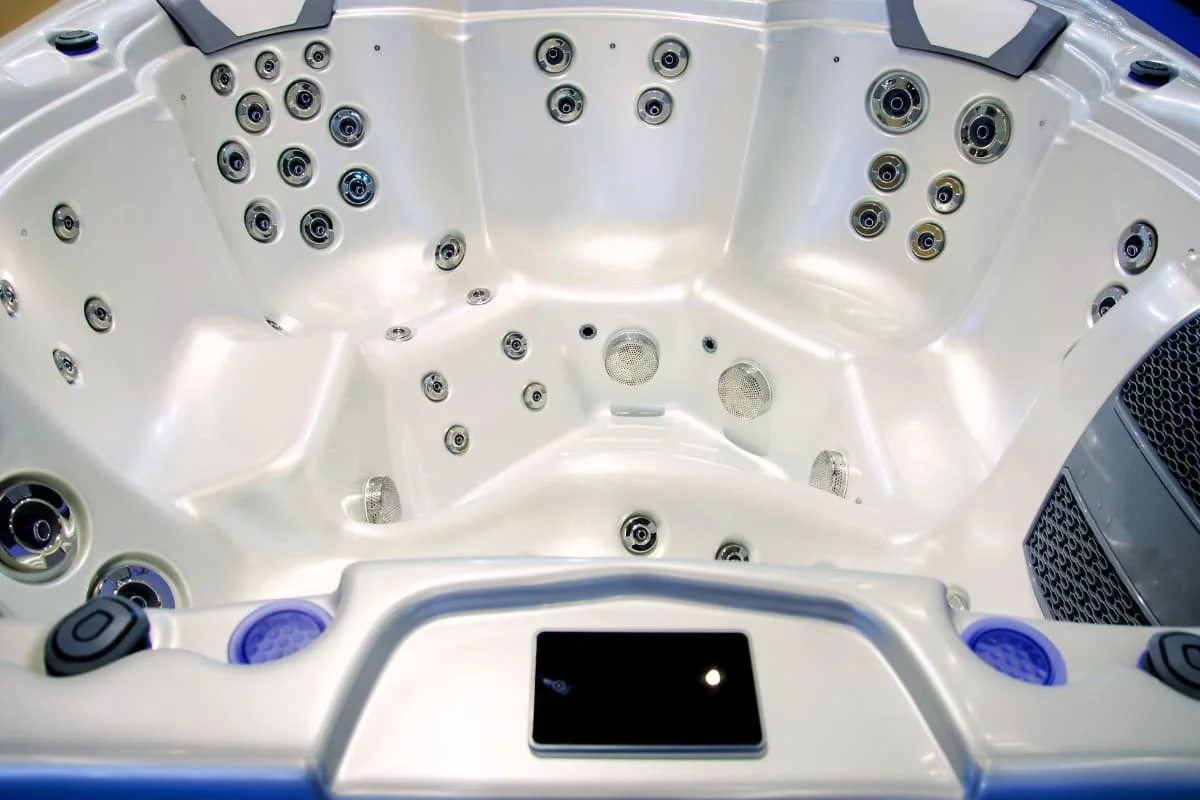
Ahh, the hot tub—your personal oasis of relaxation and therapy! But even this sanctuary needs regular maintenance to keep providing those blissful soaking experiences.
Key Takeaways:
- Drain your hot tub every 3-4 months (or annually with salt systems)
- Two main draining methods: using the built-in drain spigot or a submersible pump
- Always turn off the power before draining
- Proper disposal of hot tub water is regulated – never drain into storm sewers
- Clean the shell and filters while the tub is empty
Draining your hot tub is a crucial part of spa care that many owners find challenging at first. Did you know that improperly maintained hot tub water can harbor bacteria that multiply rapidly?
In this guide, I’ll walk you through everything you need to know about how to drain a hot tub safely, efficiently, and in compliance with local regulations.
Table of Contents
When Should You Drain Your Hot Tub?
If you’re wondering how often to drain your hot tub, it depends on your sanitization system.
- Are you using traditional chlorine or bromine? Plan to drain every three to four months.
- Got a saltwater system? You can stretch it to once per year.
But your tub might send you signals that it needs draining sooner:
- Is the water looking cloudy even after adding chemicals? Time to drain.
- Catching whiffs of unusual odors? Definitely time to drain.
- Can’t seem to keep your chemicals balanced? You guessed it—drain that tub.
- If you’re having trouble maintaining stable hot tub temperature despite proper chemical balance, a complete water change may help restore optimal heating efficiency.
Regular draining isn’t just about clean water—it’s about protecting your investment. Unlike saunas, which have different maintenance needs, hot tubs require water changes to prevent chemical buildup.
With proper maintenance, you can extend your hot tub’s life from an average of 7-10 years to 15-20 years. Think of all those extra years of relaxation!
Preparation Steps
Before you start emptying your hot tub, let’s make sure you’re set up for success:
- Turn off all power at the circuit breaker. Trust me, you don’t want electrical components running while there’s no water in the tub.
- Check your local rules about water disposal. Many cities have strict regulations about where hot tub water can go. The EPA warns that untreated hot tub water harms fish and aquatic life if it enters waterways.
- Grab your tools: You’ll need a garden hose long enough to reach your disposal point, as well as cleaning supplies for when the tub is empty.
- Plan your water’s path to avoid flooding your yard or your neighbor’s property. Nobody wants that awkward conversation!
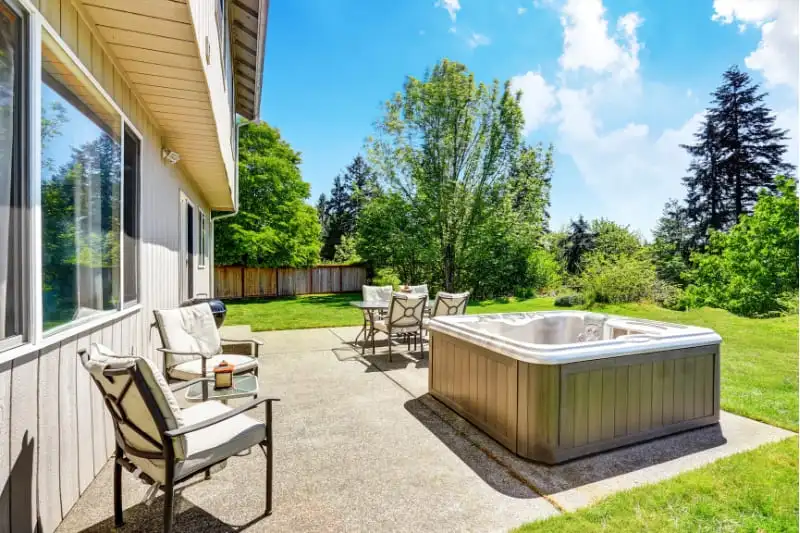
Method 1: Using the Drain Spigot
Your hot tub comes with built-in drain spigots designed specifically for this job:
- Find the primary drain spigot (usually at the bottom of the hot tub exterior)
- Pop off the cap
- Connect your garden hose without over-tightening (those plastic threads can break easily)
- Run the other end to your approved drainage spot
- Open the valve and let gravity do its thing
Got a secondary spigot? Use it after the main drainage to clear out those internal plumbing lines.
This method takes about 1-2 hours, depending on your tub size. While you wait, why not use this time to plan your next soak in your freshly cleaned tub?
Method 2: Using a Submersible Pump
Want to speed things up? A submersible pump is your best friend:
- Place the pump in the deepest part of your tub
- Hook up a hose to the pump output
- Position the hose end at your drainage location
- Switch on the pump and watch that water disappear
Using a pump cuts your draining time to about 10-15 minutes! If you’re shopping for one, look for pumps with at least 1,500 gallons per hour (GPH) flow rate and thermoplastic construction that can handle those chemicals.
Hot Tub Cleaning After Draining
Now that your tub is empty, it’s the perfect time for a thorough cleaning:
For the shell:
- Wipe down with a soft, damp cloth
- Use mild, non-abrasive cleaners made for hot tub surfaces
- Skip household cleaners—they might damage the acrylic
- Rinse thoroughly when finished
Think of cleaning a hot tub as a spa treatment for your spa! A clean tub means cleaner water, fewer chemicals, and more enjoyable soaks for you.
For the filters:
- Remove the filter compartment cover
- Turn the filter retainer handle to unlock
- Pull out the filters and give them a good rinse with your garden hose
- For deeper cleaning, soak them in a filter cleaner solution
- Reinstall when dry
For more details, please see my complete guide on how to clean a hot tub filter.
Water Disposal Considerations
Your hot tub water contains chemicals that can harm plants, animals, and waterways if not disposed of properly:
Best disposal options:
- Sanitary sewer system: This sends water to treatment facilities designed to handle chemicals
- Ground infiltration: After dechlorinating, some areas let you drain onto your property away from streams or ponds
Never send your hot tub water:
- Into storm drains (these lead straight to local waterways)
- Onto your neighbor’s property
- Into streets or public areas
Before disposal: (Source: Portland.gov)
- Let water cool for at least 12 hours
- Reduce chlorine to 0.1 mg/L or less
- Ensure pH is neutral (between 6-9)
- Control the flow rate to under 50 gallons per minute
By disposing of your water properly, you’re protecting local ecosystems and avoiding potential fines from your municipality.
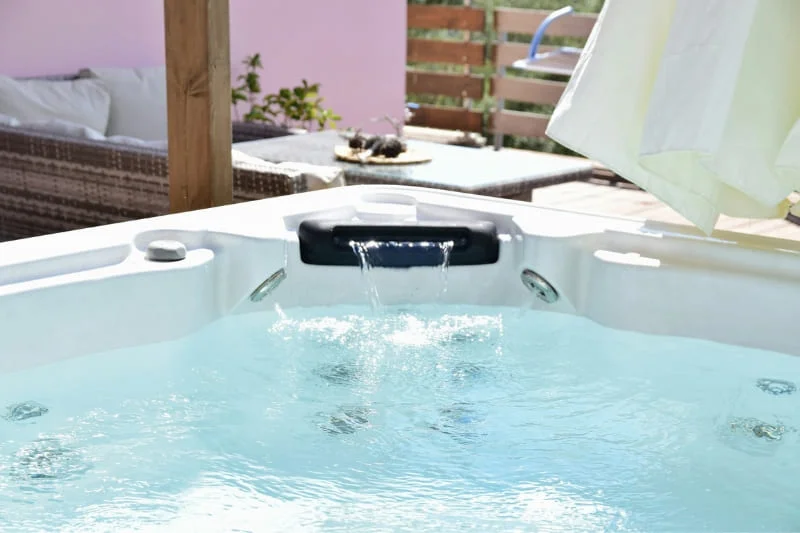
Refilling Your Hot Tub
Ready to fill up and get back to relaxing? Here’s how to do it right and avoid those frustrating air bubbles:
- Make sure all valves are closed
- Find the correct fill pipe for your model (often under the filter)
- Insert your garden hose into this location rather than directly into the tub
- Fill completely
- Turn the power back on once full
- Balance chemicals according to manufacturer recommendations
Ever turned on your hot tub after refilling only to hear strange noises? That’s likely an airlock – those pesky air bubbles that get trapped in your plumbing. Save yourself the headache by filling through the proper inlet instead of just tossing the hose into the tub.
Troubleshooting Common Draining Issues
We’ve all been there – you’re trying to drain your hot tub, but something’s not quite right. This applies to all models, from built-in spas to portable options like the Coleman SaluSpa inflatable hot tubs. Here’s how to fix common problems:
Slow drainage:
- Check for kinks or obstructions in your drainage hose
- Ensure the hose isn’t running uphill (for gravity drainage)
- Verify the drain valve is fully open
Stuck valves:
- Apply penetrating oil to seized valves
- Use gentle pressure – never force plastic components
- Contact a professional if valves won’t budge
Incomplete drainage:
- Use a wet/dry vacuum to remove the remaining water
- Wipe down low spots with absorbent towels
- Check internal plumbing lines for trapped water
Nothing’s more frustrating than thinking you’ve finished draining only to find puddles of water still lurking in your tub. Taking the extra time to remove all water now prevents mold and mildew issues later.
Conclusion
Draining your hot tub might seem like a chore, but it’s essential for keeping your water clean and extending the life of your spa.
With these steps, you’ll be able to drain, clean, and refill your hot tub like a pro while protecting the environment.
Make draining your hot tub part of your regular maintenance routine every 3-4 months, and you’ll enjoy crystal clear, relaxing soaks for many years to come.

“Become a Sauna Expert Overnight!”
Grab Your “FREE” Sauna E-book NOW!
Get your hands on the ultimate sauna manual. From history to DIY setups, our free guide has it all.

As a Chartered Accountant turned sauna enthusiast, I bring a unique blend of analytical skills and hands-on experience to the world of heat therapy. With over a decade dedicated to researching and testing sauna products and practices, I’ve developed a deep understanding of this field. A the founder of HomeInDepth.com, I provide reliable, easy-to-understand information on all aspects of saunas. My goal is to guide you through every step of your sauna journey, offering meticulously researched, unbiased advice to help you make informed decisions and create your perfect sauna experience. I’m always happy to hear from sauna lovers like you—feel free to leave questions or share your own tips in the comments below so we can learn together. Contact me on:



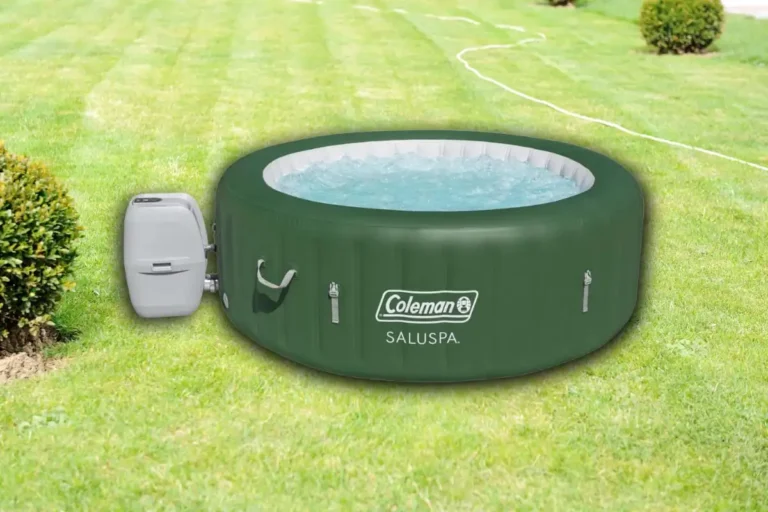
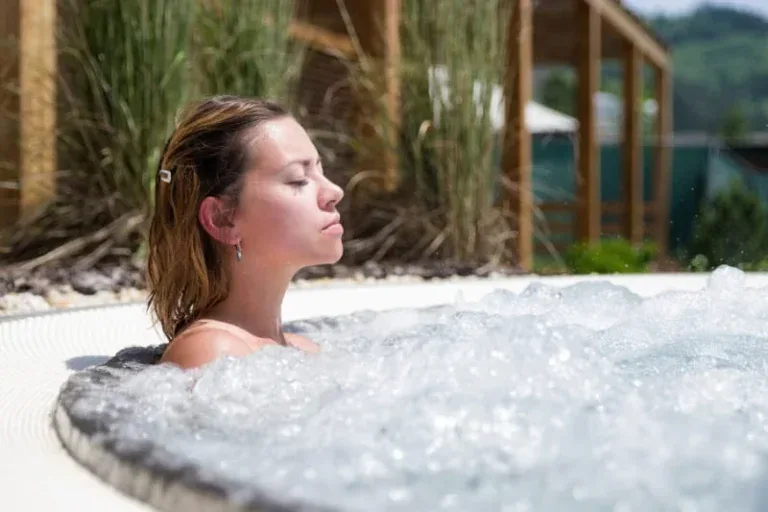
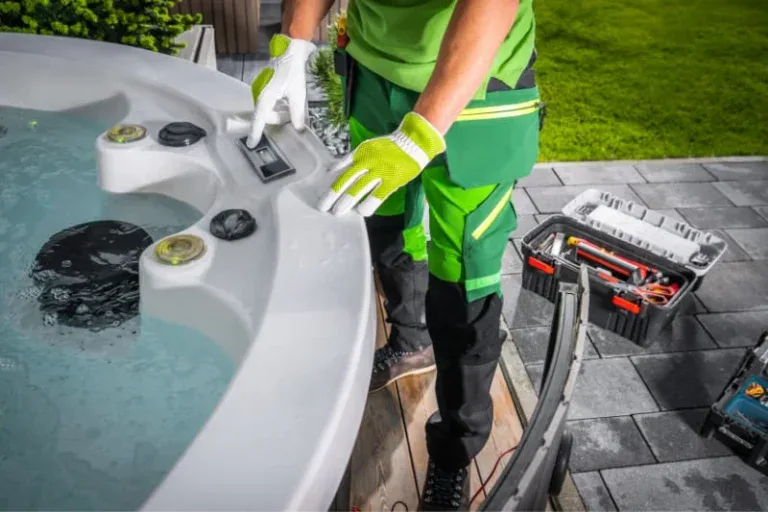
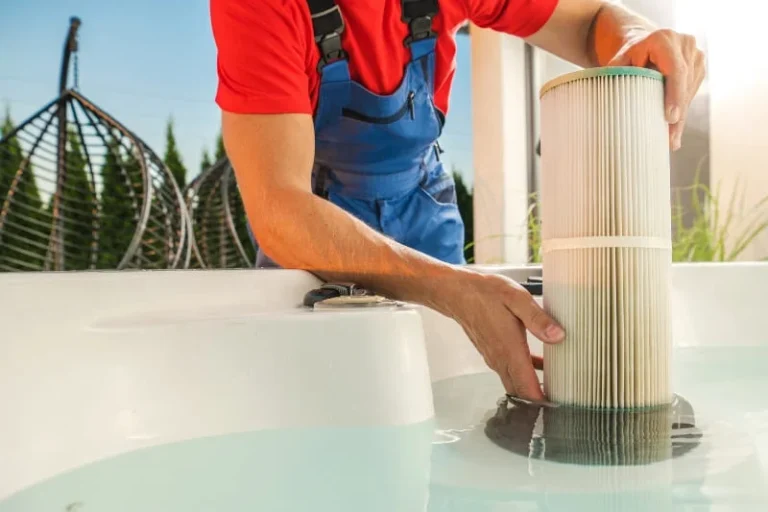
A step-by-step approach to draining a hot tub that’s easy to understand. Great tips for maintenance and prolonging the life of your spa.